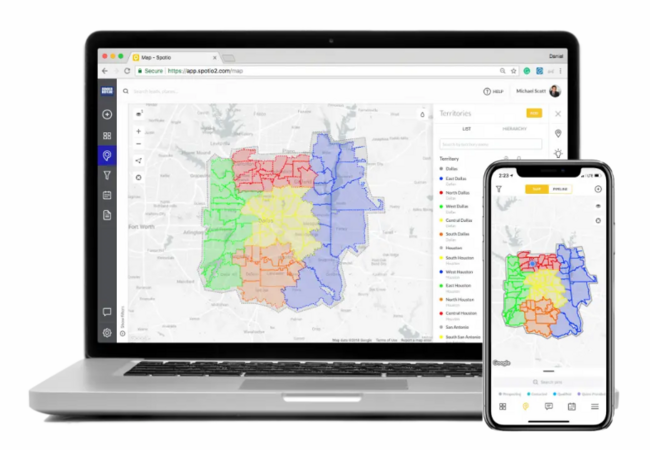Effective sales territory mapping involves a SWOT analysis that includes strengths, weaknesses, opportunities, and threats. It will help you create balanced territories and allow your sales team to hit revenue goals. Traditionally, sales territories are divided by geographical boundaries, but modern software takes more into consideration. You can use demographic data to ensure that your salespeople are meeting with high-value accounts and avoiding unnecessary competition.
Opportunity Tracking
If you’re focused on new business and growth, sales territory mapping is essential for a successful team. However, it’s equally important to consider consumer retention and customer satisfaction when planning territories. The right balance can help keep your salespeople happy and productive; which is crucial to the success of your company as a whole. Sales territories should be evenly balanced so that all your salespeople have a manageable number of leads and customers in their areas. It helps keep them motivated and ensures that they are spending only some time chasing new customers while missing out on potential opportunities in the existing customer base. Using intelligent sales territory software, you can divide territories by customer demographics, geographic locations, or a combination.
For example, suppose you sell home care services for senior citizens. In that case, you can divide your sales territories based on age demographics to ensure each rep has a manageable number of seniors in their area. You can also use sales territory mapping software to calculate the value of your current accounts and prospects to prioritize future opportunities when assigning territories. It can be a quantitative or qualitative measurement, depending on the type of product or service you offer. Taking the value of current accounts into account can also help you allocate; resources more efficiently by ensuring that high-value customers get the attention they deserve.
Customer Segmentation
Creating and managing sales territories is a significant part of any organization’s growth strategy. Whether it’s growing sales, expanding existing territory boundaries; or moving into new markets, effective segmentation is essential to help the company achieve its desired goals. An intelligent sales territory mapping tool will give you a clear picture of your customer; data and how to divide it into logical territories. The software will automatically import and analyze your data, visualizing it on a map. It will also highlight clusters and patterns in the data; allowing you to identify market areas with high or low customer density.
You can use the data to make informed decisions about allocating; sales territories based on geographic criteria like revenue potential or customer coverage. You can also use it to analyze team performance, understand where and when sales reps cross into each other’s territories; and compare dealer or outlet sales performance. Performing regular reviews will ensure your sales territories are optimized for success. For example, if you’re experiencing a surge in demand for your product in a specific area; it could be worth increasing your team size to meet consumer expectations and reduce churn. It’s best to model scenarios and test different alignments before making significant changes. It will avoid disrupting relationships and putting your revenue targets at risk.
Alignment Tool
When using sales territory mapping software, your managers and reps can see their territories on a map to prevent duplicate work. They can also create their routes and manage quotas within the system, helping to improve collaboration and communication across the team. Sales territory mapping tools can help you divide territories based on various criteria, including geographic boundaries, customer demographics, and sales potential. It ensures each rep is assigned a manageable number of accounts and enough opportunities to achieve a quota. Adding other data points to your territory maps can also explain why some territories perform better.
For example, if your company sells home alarm systems, targeting homes with senior owner demographics may be more successful. Managers can also adjust quotas and custom fields, discover patterns using heat maps, and use customized dashboards, formulas, and reporting tools to monitor sales performance. The tool also integrates with CRM, ERP, and accounting tools, so your sales team can get a complete picture of their sales performance in one app. eSpatial is another sales territory mapping solution that helps you to balance and reorganize territories and assign new accounts in minutes. The software can automatically update your territory maps, ensuring they are always up-to-date.
Workload Index
One of the biggest reasons salespeople fail to meet their quota is that they are working at or near capacity and can’t give each account or prospect the attention it deserves. With efficient sales territory mapping, you can ensure each rep’s territory has a manageable number of customers and prospects, eliminating the waste of resources and ensuring everyone can deliver on their promises. A Sales Territory Mapping Software great way to achieve this is by using data metrics to prioritize customer and prospect accounts during the territory-building process. It ensures that each territory has a balance of opportunities to help motivate teams and improve performance. The process also gives managers and salespeople transparency into their geographic areas to eliminate overlaps and redundant work.
Building solid territories aligned with sales objectives and a good fit for your team’s skill set and experience level is essential. Advanced mapping solutions use various data sources, including geography, client type, sales goal, and more, to create transparent and equitable territories optimized for success. Once you’ve built your territories, you must assign them to your salespeople. Traditional methods of doing this are to allocate them by geographic boundaries or ZIP codes. Still, smart software enables you to take a more holistic approach and make decisions based on various factors.

